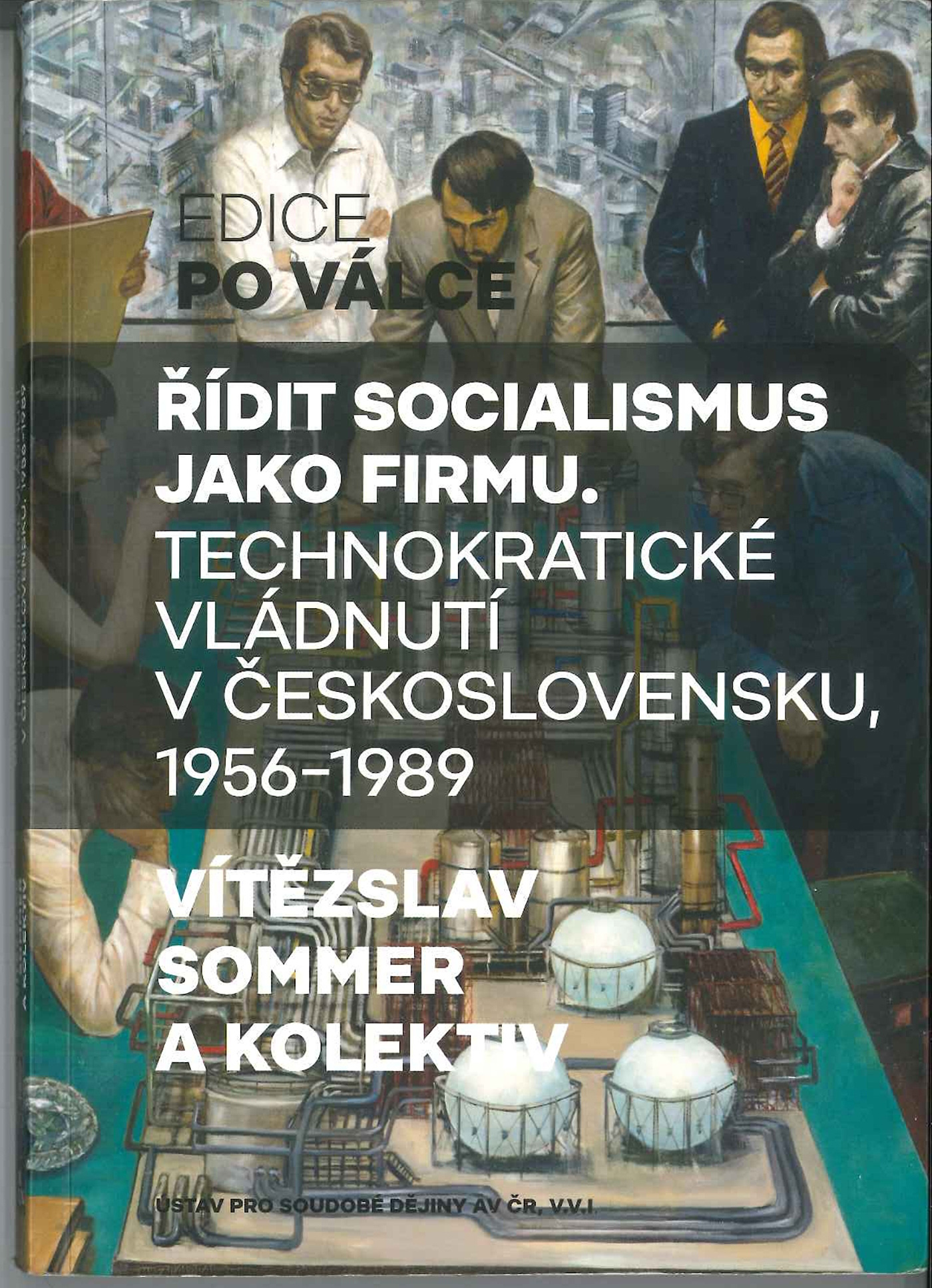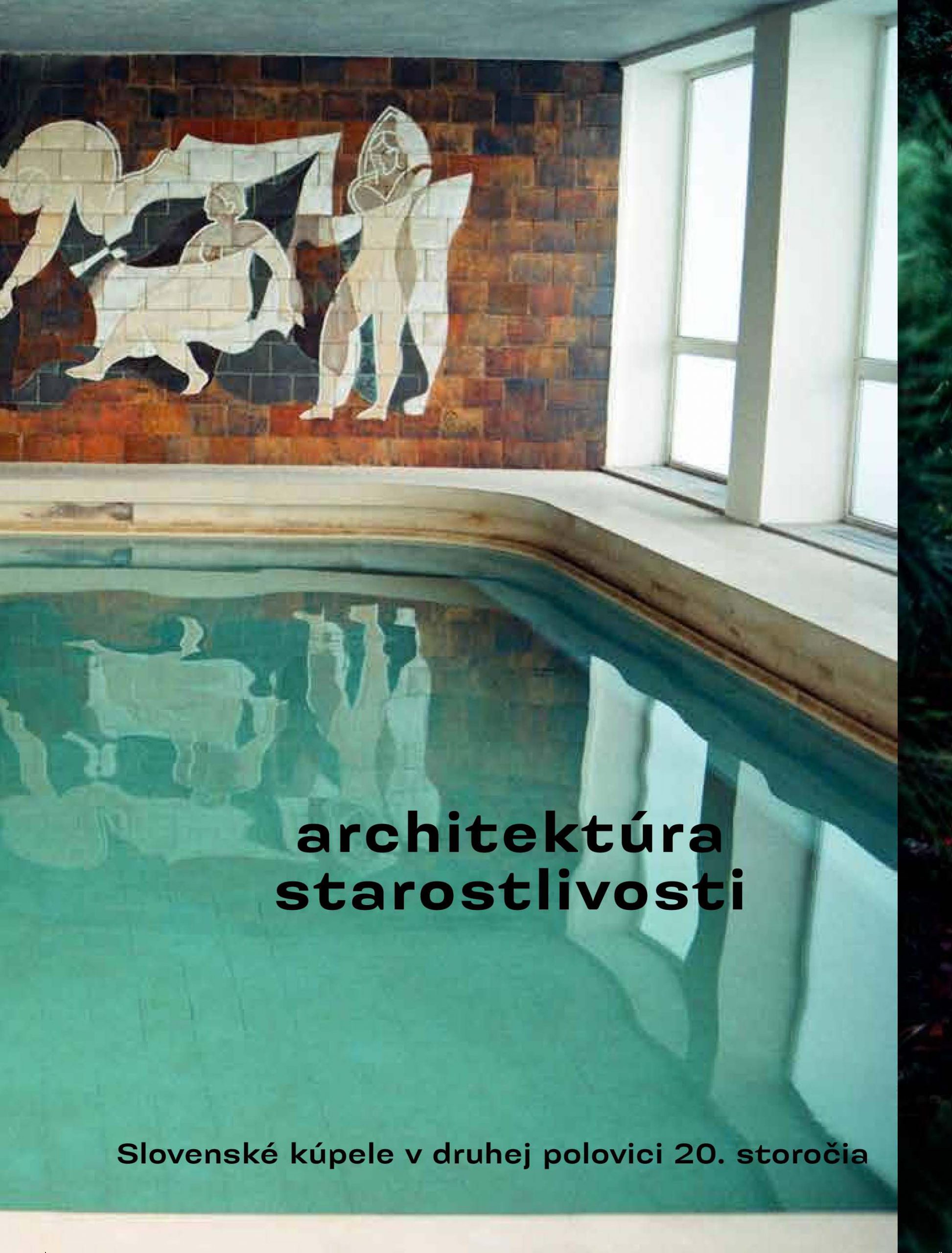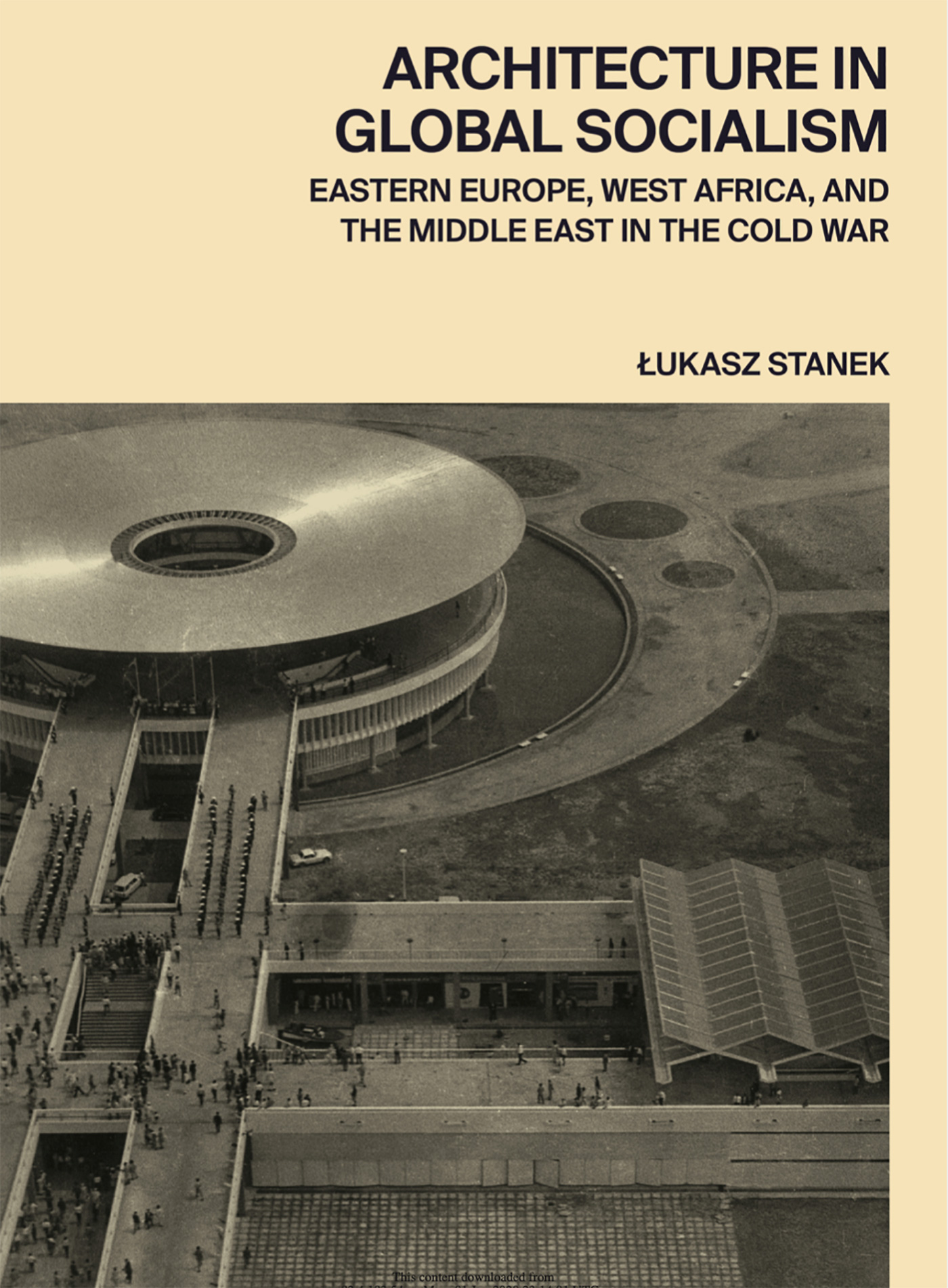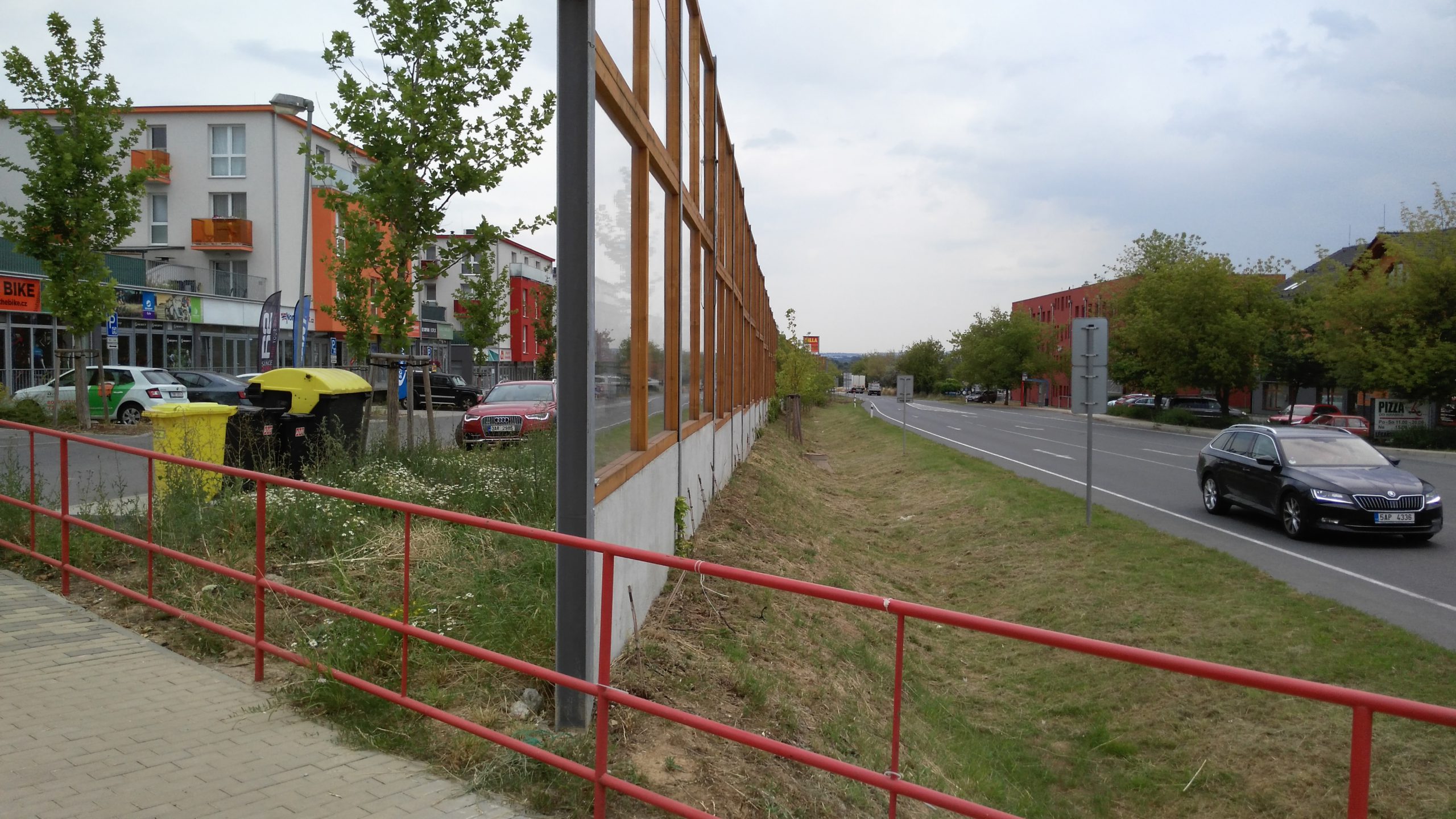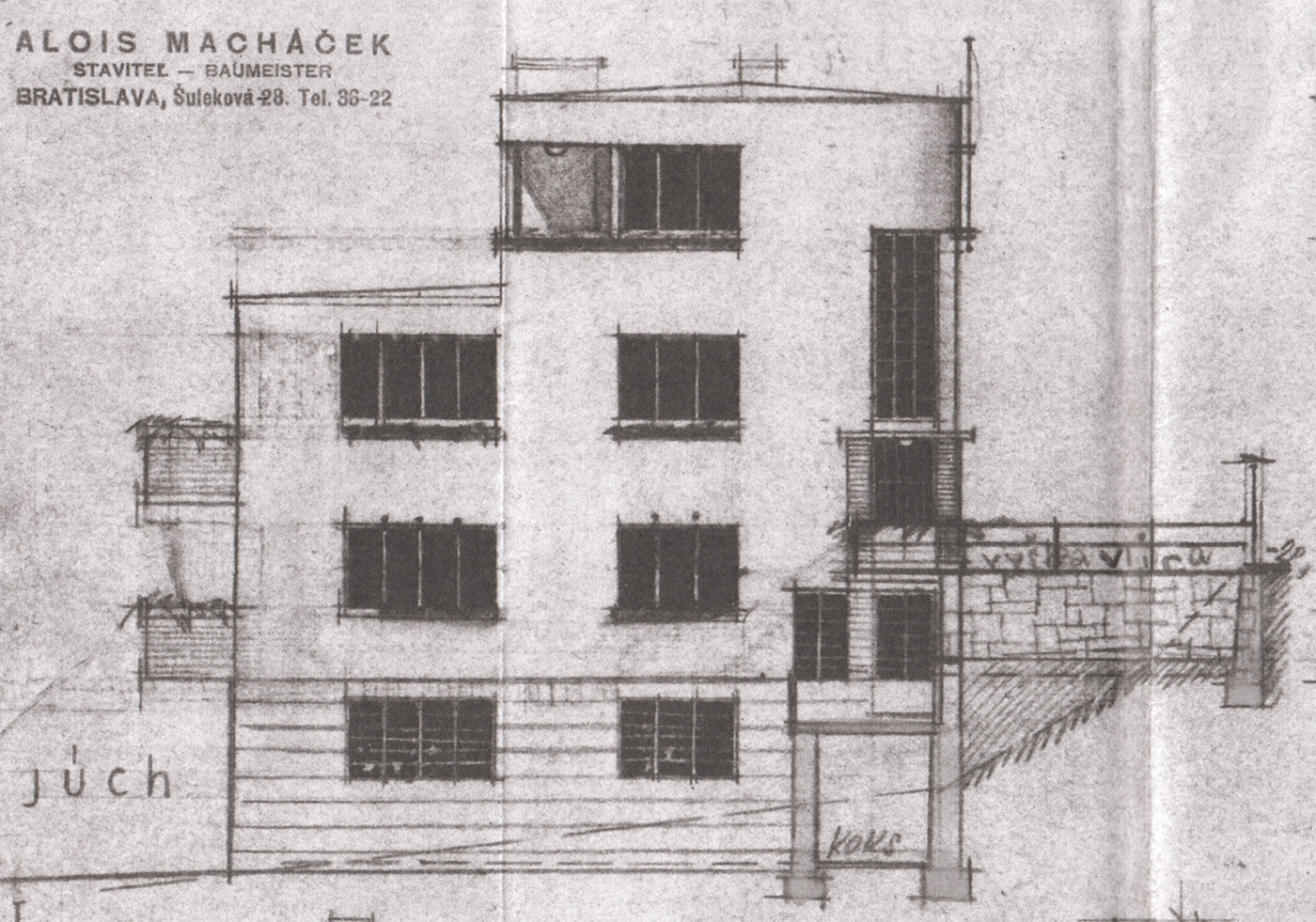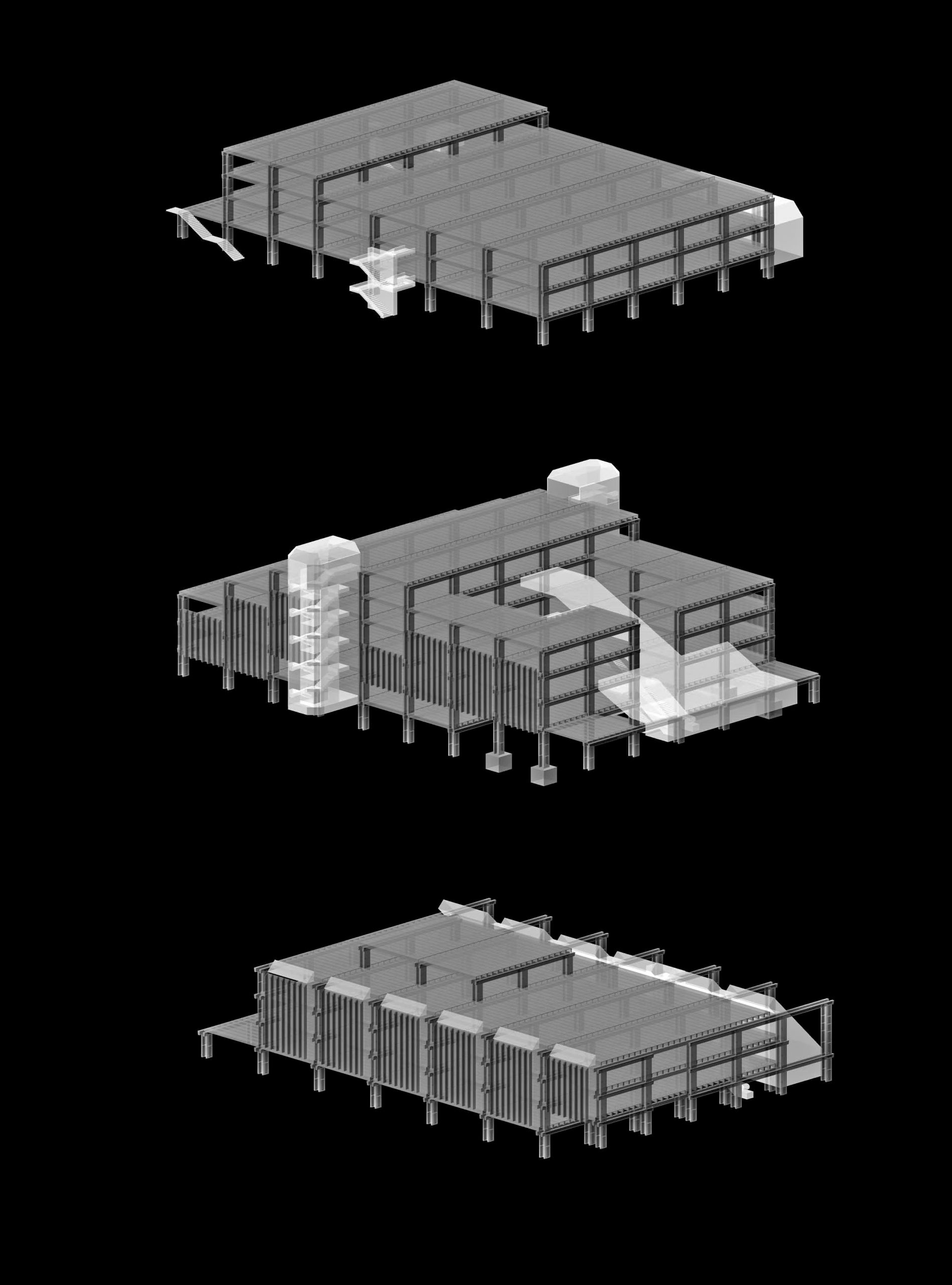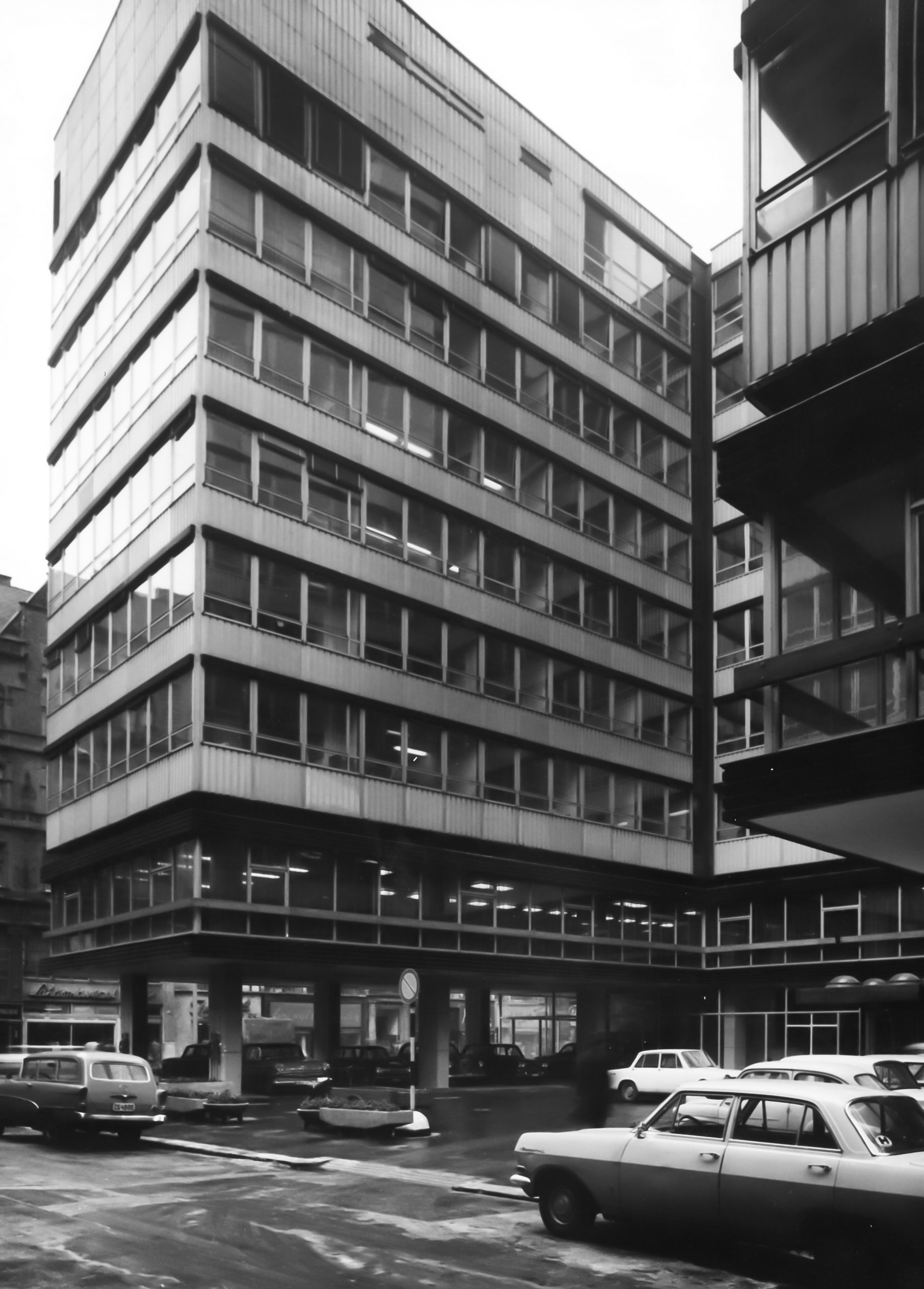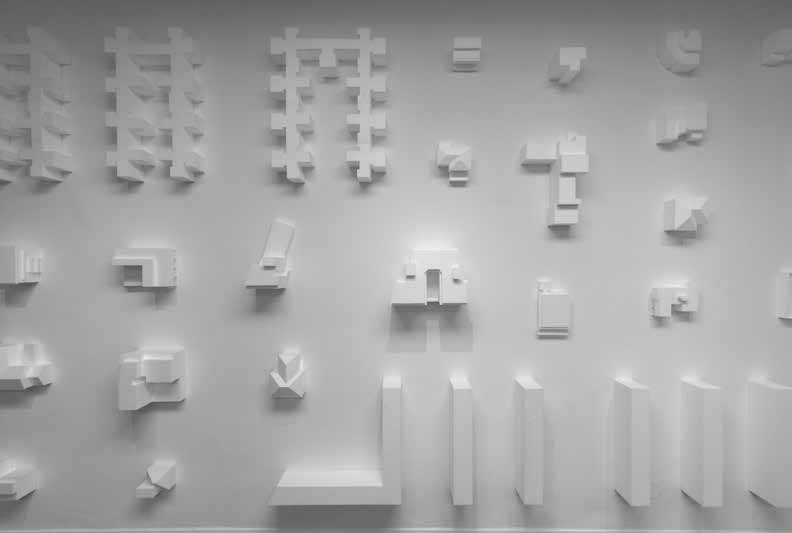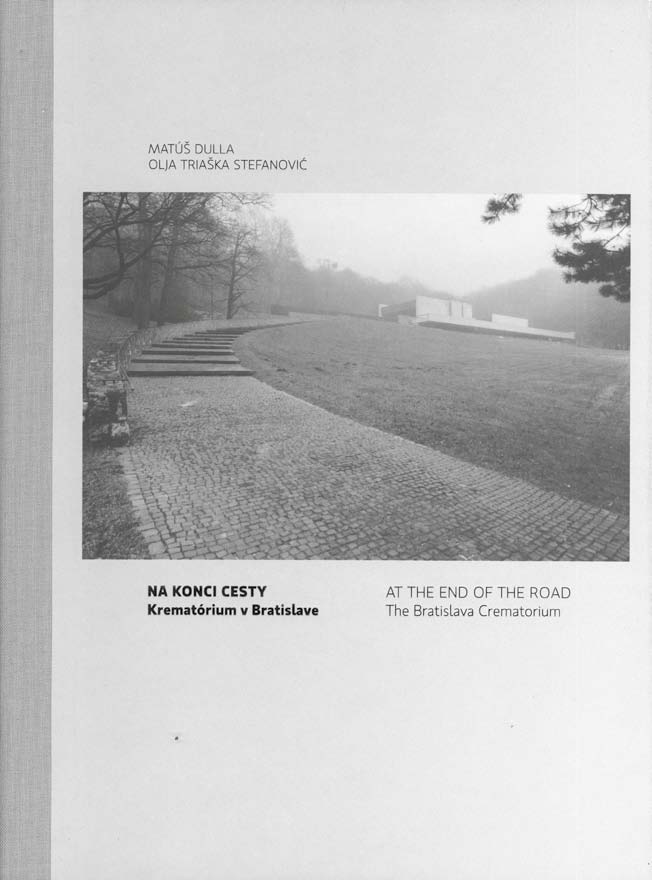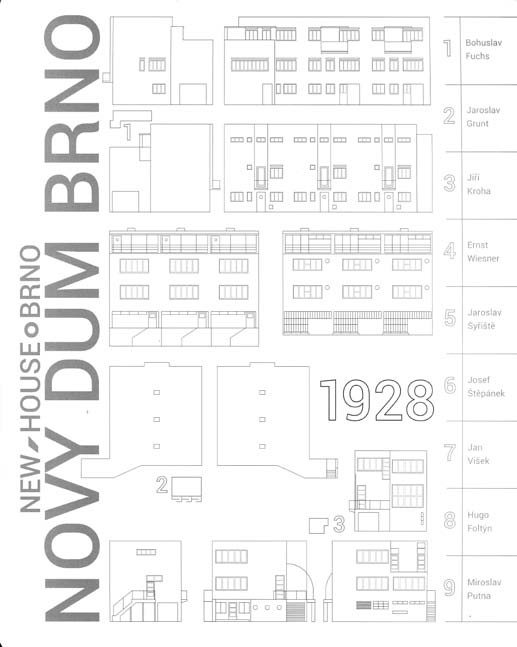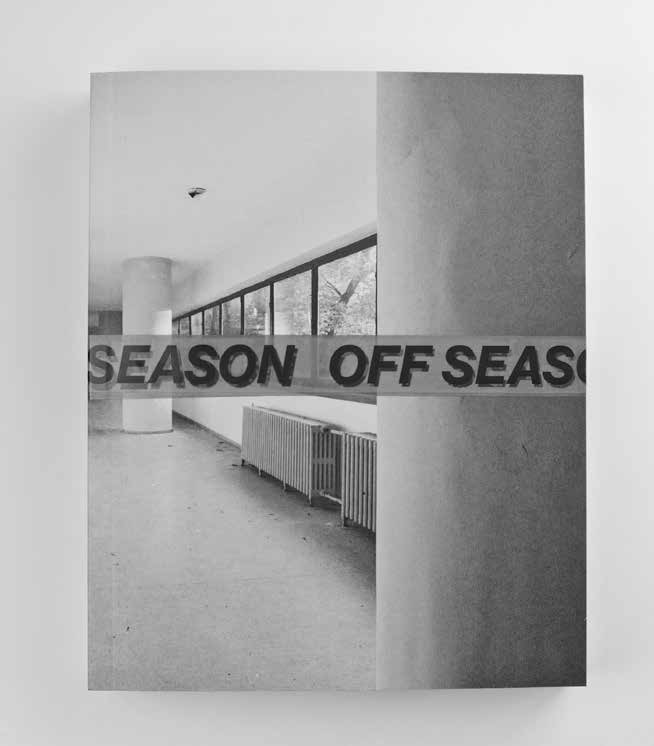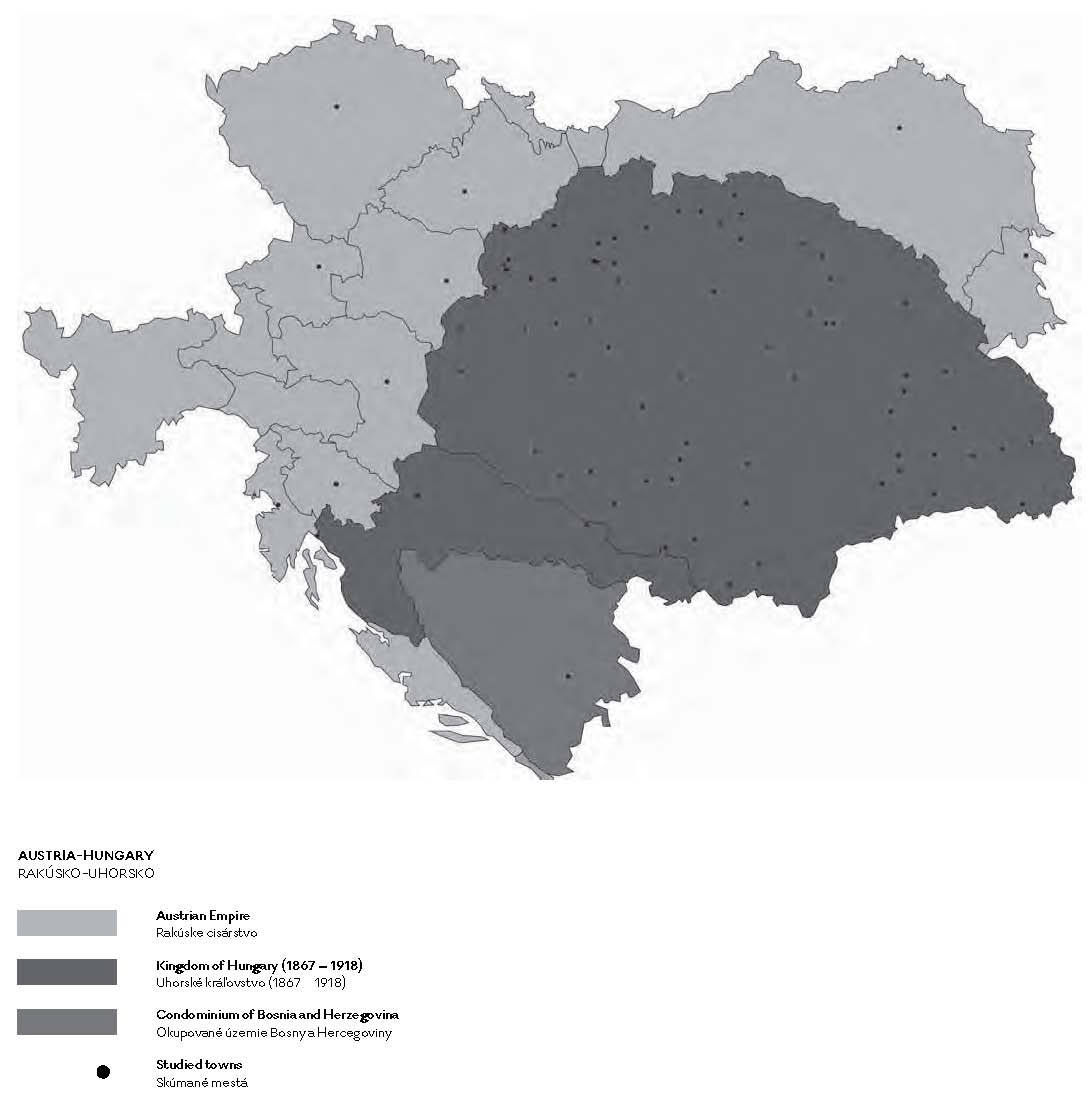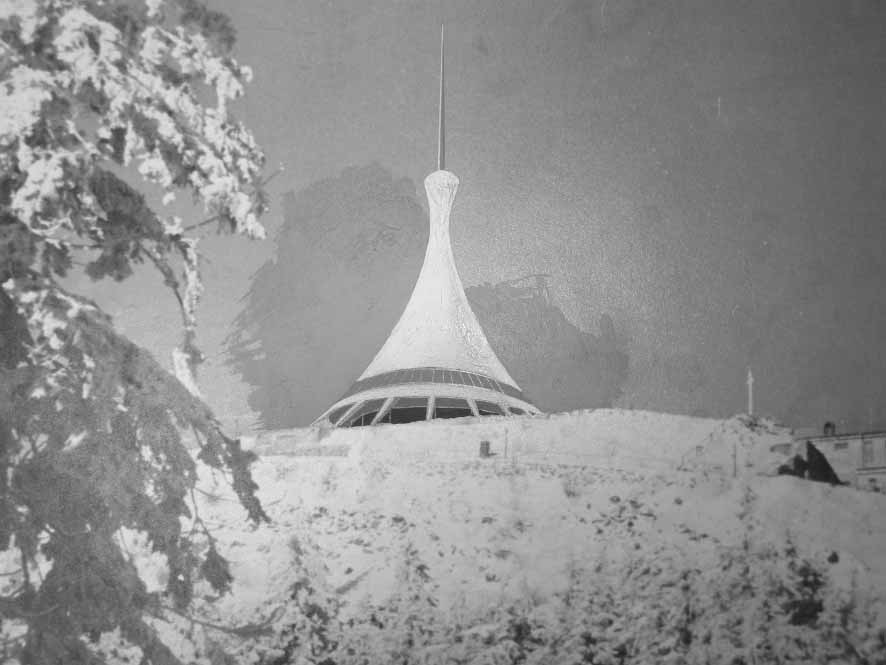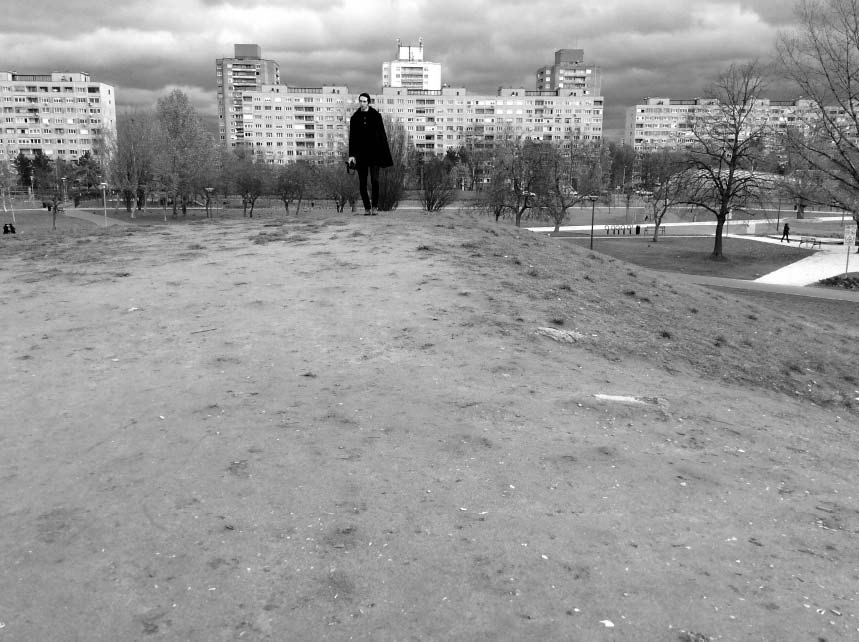VÍTĚZSLAV SOMMER, MATĚJ SPURNÝ A JAROMÍR MRŇKA: ŘÍDIT SOCIALISMUS JAKO FIRMU TECHNOKRATICKÉ VLÁDNUTÍ V ČESKOSLOVENSKU, 1956 – 1989, 2019, Praha: Ústav pro soudobé dějiny AV ČR a Nakladatelství Lidové noviny. 296 s., ISBN: 9788074226748
Author: adminfree
(Un)treated architecture
MARTIN ZAJIČEK, ANDREA KALINOVÁ, PETRA HLAVÁČKOVÁ (EDS.), ARCHITEKTÚRA STAROSTLIVOSTI SLOVENSKÉ KÚPELE V DRUHEJ POLOVICI 20. STOROČIA 2019, Bratislava: Archimera. 344 s. ISBN: 978-80-972341-5-7
Rewriting the History of Shaping Landscapes in the Global South: The Role of Eastern European Professionals
STANEK, ŁUKASZ: ARCHITECTURE IN GLOBAL SOCIALISM. EASTERN EUROPE, WEST AFRICA, AND THE MIDDLE EAST IN THE COLD WAR, 2020, Princeton and Oxford: Princeton University Press, 368 p. ISBN 978-0691168708
Moi et LeC: Breathing Walls in the Architectural Performance of a City’s Metabolism
The article presents a discussion on cities’ metabolisms and bioregions, specifically their habitable and edible landscapes for cross-species co-living. Paper poses the question with respect to the relatively simple and small-scale architectural elements of breathing walls, envelopes, and screens. Nonetheless, it appears that such elements as breathing walls, envelopes and screens are hyperobjective and multiscalar, playing a critical role in urban metabolisms, their ecosystems, edible and habitable landscapes for multiple species, including humans.
The Influence of Building Development on the Location and Form of the Centers of Residential Communities – an Evaluation Using Space Syntax
This paper examines the spatial impacts of suburbanization and its consequences in communities that were often the subject of sociological or social-geographical research in the past. Over the past 30 years, the examined settlements have doubled in size, both in terms of population and of buildings. Special attention was intentionally paid to street networks, as they form a kind of a skeleton for every residential community.
Urbanization Outside the City Interwar Housing in the Bratislava Suburb Kramáre
The work is devoted to the period of the urbanization and expansion of the city of Bratislava in the direction of the suburbs in the first third of the 20th century. It deals with the quality of pre-urban inter-war architecture and the share of Czech architects and builders in its origin. While the architectural ideas of functionalism were applied outside the centers, they were nonetheless adapted to the socially less privileged layers. The studied area is the one of the former vineyards in the urban part of Vinohrady – Kramáre, with the immediate research focusing on the part roughly bordered by the present-day streets Uhrova – Jelšová – Stromová – Bárdošova – Hroznová1. The source for the article is archival research by the author.
The Archi-Tectonics of the INTEGRO Long-Span Skeletal System. The Concept of an Open Architectural Form Represented by the Series of Prior Department Store
The long-span concrete prefabricated skeletal system ŠPÚO-ZIPP was originally intended for the construction of Prior department stores in Slovakia, and later was used as a universal open modular system for a wide range of buildings under the name INTEGRO. Using the example of three department stores, the study offers arguments why, from the point of view of architectural interpretation, it is more correct to perceive buildings made from this skeleton as a series than to look at them as individual buildings responding more or less successfully to their context. As such, the architecture is defined more by a compositional or structural principle than by the final shape and program.
The Interpretation of Architecture as a Methodological Problem
In this essay we hope to address a few methodological issues in interpreting a work of architecture that have gradually shown themselves to be problematic and at the same time productive. If we accept interpretation as one possible approach to an architectural work, then the fundamental issue of interpretation becomes the question of the sense of the work in relation to, and in distinction from, preestablished and relatively stable meanings. An equally important range of issues, related to the first and fundamental one, has to do with rethinking not just the relationship between interpretation and overinterpretation, but also positioning the interpretative act: i.e., asking whether interpretation takes the work of architecture to be its primary point of departure and defers to its composition and nature (its “workliness”), or whether interpretation is considered the fulfilment of the process of creating the work of architecture. Beyond these ranges of problems, there arise two derivative ranges characterizing the nature of interpretation. The first concerns an architectural work’s autonomous and heteronomous semantic layers, and the second relates to the association between a method of interpretation’s “repeatability” and the uniqueness of a work of architecture. We endeavor here to remark on each of these ranges of problems while also striving to propose a possible answer to the questions raised within them. In this process we draw from established art-historical, semiotic, and architectural conceptions. To a conclude with a concrete example, we present a brief description of how we interpreted one of Dedeček’s major works, the Slovak National Archives in Bratislava.
The Beauty of the New Modern Life and Technology The Survival of Socialist Architecture in the Budapest City Centre
Based on the narrowing lists of three Budapest architectural guides (1980, 1997, 2014) of buildings completed 1945-1990, the paper intends to discover the reasons for their survival, changes or demolishing. It concentrates on the story of three office buildings built after 1960. The analysis proves that the two demolished buildings not only lost their tangible value, but their contemporary public and professional acceptance was not without restrictions either. On the contrary, the only one still standing office building was surrounded by a myth which led to the fact that it kept its architectural appreciation even after its radical reconstruction – as the memory of the lost tangible value.
Environmental Ideas Coopted: ARARAT Exhibition, Stockholm, 1976
On 2 April 1976, the ARARAT exhibition opened at the main museum of contemporary art in Stockholm, the Moderna Museet. Its ambiguous biblical name was taken from the acronym for Alternative Research in Architecture, Resources, Art and Technology, an interdisciplinary research group formed by architects, planners, engineers, biologists and artists. Four years previously, the celebration of the UN Conference on Human Environment in Stockholm, and the alternative events performed in parallel, had revealed architecture as a central political technology within the global crisis of the natural environment and human habitat. The international event, as I argue here, later resonated in the articulation of Swedish green activism, installing the desire for an environmentally sustainable habitat among society and, eventually, informing the exhibition’s standpoint. Deploying full-scale housing models, inhabited sculptures, workshops and lectures, ARARAT positioned environment and natural resources as the material, intellectual and even spiritual driving forces for a possible shift in planning and architecture. It wielded a strong critique against consumerist societies and advocated for a new approach in planning. Following many of the ideas voiced at the UN counter-events, the exhibition proposed that in place of a top-down process, planning should be exercised by an empowered and participative community. Nonetheless, it should embrace a reformulated use of technology to shape alternative ways of living in balance with the elements of nature.
Sarajevo Memories – the City of Sublime Disorder
The development of cities as well as collective memory is not a linear process, but one strongly related to the ever-changing dynamics of time and space. The manner in which urban tissue evolves through anticipated events, or is disrupted by unforeseen, often chaotic happenings, comes together in a myriad of networks that generate different levels of socio-spatial complexity. In a city like Sarajevo, whose fate has been determined by numerous historic events, the built fabric is a mirror image of fragmented memory elements that continue in space through mosaics of events. Chronologically arrayed, historical layers of the city stand in sharp contrast, strikingly opposing but beautifully coexisting. In its linear progression, it unapologetically narrates the tale of its changing architectural and cultural identity, comprehensible in its disarray. However, architecture of the post-war city in transition, imposes questions of visual identity and character of the inheritance in the making. In specific, contemporary additions, congest the dense urban fabric of Sarajevo, with ambiguous visual expression and persistent disregard to the complex built setting, as the city and the society are imprisoned by the opposing collective memory discourse.
Housing Production and Energy Use in Greece Insights from History and New Social Challenges
The outbreak of the Greek debt crisis in 2010 sparked considerable discussion on domestic energy consumption in Greece. In combination with austerity measures, the economic recession has led to rising unemployment, falling incomes, the rollback of the welfare state and increased taxation burdens, especially on private property.2 Financial constraints, coupled with rising fuel prices as the result of changes in the global energy market and specific national policies, are making energy unaffordable for a significant part of the population.3 Under these circumstances, access to energy is no longer taken for granted and the concern has become part of a wider discourse about the housing crisis.4 The problems and the challenges regarding domestic energy consumption are significant aspects of the deteriorating living conditions of Greek households, while also intertwined with the physical deterioration of buildings due to high operating and maintenance costs and pressure on borrowers who have non-performing mortgage loans.
Windows Into the Manifestos of the New Path
ARCHITECT FRIEDRICH WEINWURM.NEW PATH
Curator: Henrieta Moravčíková
Expert cooperation: Denis Haberland
Exhibition architecture: Peter Moravčík
Graphic design: Ľubica Segečová
- 1. 2018 – 20. 5. 2018, Slovak National Gallery, Bratislava
The Route to the Bratislava Crematorium
MATÚŠ DULLA, OLJA TRIAŠKA STEFANOVIĆ: NA KONCI CESTY. KREMATÓRIUM V BRATISLAVE / AT THE END OF THE ROAD. THE BRATISLAVA CREMATORIUM
2017, Bratislava: Slovart. 128 p.
ISBN: 978-80-556-2985-8
The Residence of a Modern Person. The New House, Brno 1928
JINDŘICH CHATRNÝ, DAGMAR ČERNOUŠKOVÁ, PAVEL BORSKÝ (EDS.): NOVÝ DŮM BRNO 1928 / NEW HOUSE BRNO 1928
2018, Brno: Muzeum města Brna. 303 s.
ISBN: 978-80-86549-74-3
Machnáč Deserted
ANDREA KALINOVÁ, MARTIN ZAIČEK, PETRA HLAVÁČKOVÁ (EDS.): OFF SEASON
2017, Bratislava: Archimera. 200 p.
ISBN: 978-80-972341-3-3
Alice Masaryková: Patron of the Arts at the Prague Castle
The study explores the extent of Alice Masaryk’s patronage in the following aspects: 1) art pieces donated by Alice to the Prague Castle collection, 2) Alice Masaryková’s cooperation with architect Josip Plečnik on the reconstruction of the Presidential Suite in Prague Castle and finally, 3) her participation in the creation of the presidential collection of Fine Arts for the Prague Castle. Based on new archival findings, it further specifies the mechanism of Alice Masaryková’s involment in the three discussed.
The Roman Catholic Church of St. Anna in Oravská Lesná
The study deals with the architecture of the Church of St. Anna in Oravská Lesná. After a description of the troubles connected with the planning and building of the new church, a short biography is provided of the architect, Oszkár Láczay-Fritz. Information on the construction of the church is then followed by a description of the church, analysis of the patterns as well the possible sources of inspiration and their origin. The architecture of the church is thus contextualised within the late Art Nouveau version of Hungarian National Romanticism, represented by the body of work of Károly Kós and his Young Ones circle. The study further addresses the architecture and visual aspects of the church, as well as their ideological background.
Did a Steindl School Exist ? The Members of the Design and Technical Management Team of the Parliament in Budapest
The architects’ office (involving architects, draftsmen, planners, foremen) of the Parliament in Budapest, led by Imre Steindl, existed between 1885 and 1902. In the first part of our essay, our aim is to publish further information based on the historical findings of the research performed regarding the office’s members, the circumstances of their joining and their further professional development. In the second half of the publication, we attempt to provide an answer to the question in the title, i.e. to determine the extent to which Imre Steindl’s influence lived on in his students’ and colleagues’ professional activities. This investigation is undertaken by means of analysis of the plans and realised buildings produced by the members of his design and technical management team.
The Buildings Built For Public Use by “The KKK Group” In Croatia: Architecture, Structure and Conservation
Architects Jovan Korka, Đorđe Krekić and Georg Kiverov founded the KKK Group in 1931 in Zagreb, and worked together until 1939. During its activity, the Group built in total five public buildings for social use: the Chamber of Labour in Zagreb and the Public Labour Exchange buildings in Zagreb, Osijek, Slavonski Brod and Karlovac. The primary emphasis on the conducted analysis focused on the hidden architectural and structural values of similar buildings in the authors’ body of work that have been overlooked in the existing research, and the presentation of unknown works. The surviving buildings, the legacy of the KKK Group, are a testimony to the level of functionalist and avant-garde modern architecture in Croatia.
The Residential Area of Cheremushky as an Example of the Implementation of Khrushchev’s Housing Reform in Ukraine
The article shows the aims and the specific features of Khrushchev’s housing reform, based on the history of design of the residential area of Cheryomushky (Odesa). The reform introduced a number of significant changes in the system of mass housing construction, which brought about a major transformation of the construction industry. Also described here is the transformation of the typology of housing stock – from buildings of frame-panel structure to large-panel 5-storey residential buildings with small apartments for one family (“khrushchevka”). The specific features of the town planning of the Khrushchev era extensively predetermined the problems of urban development in post-Soviet Ukraine, which must be solved today.
Czech Land-use Planning Trough the Eyes of Planners: A Continuing Erosion of Old Orders or the Birth of a New Doctrine?
The study assumes the goal of sketching what has developed in the environment of the Czech urban-planning profession since the end of the 1980s: from the fall of Communism through the era of political-economic transformation, and what form it has currently assumed. The state of self-awareness and the perception of shifts in professional values is ascertained through the method of unstructured conversations with urban planners. The theme of the ethical orientation and the practical methods of architect working in the area of land-use planning in the context of broader social developments has yet to be resolved in the Czech Republic, or at best it limited to occasional contributions concerning the role of the architect in the process of the investment construction and formation of cities, yet hardly in the planning ramifications of society-wide political processes, but more with a stress on their aestheticizing role. Generally, such discussion tends not to diverge much from the Modernist understanding of the urban-planning profession as only one, not particularly independent, offshoot of architecture.
Urban Typology in the Habsburg Empire, 1867 – 1918, with a Special Emphasis on Hungarian Towns
The urban transformation in the territory of historic Hungary reached the (first) great culmination in the era of Austria-Hungary (1867 – 1918), thus representing a new direction for urban development. As a result, investigation and classification of urban taxonomy that focuses on the territory of historic Hungary as a whole between 1867 and 1918, makes it possible to undertake a uniform evaluation and demonstration of urban development. The aim of creating a taxonomic designation for Austro-Hungarian towns (16 basic types, 9 final types) and urban tissues (10 main types and their subtypes) is intended to describe and evaluate the town building activity of the era, since it has yet to be fully recognised and given appropriate investigation.
CLEARANCE: Changes in Eminent-Domain Legislation in Early 20th-Century Bratislava and Their Reflection in Planning the City
Clearance, as the “cleansing” of a building site from existing unwanted construction, ranks among the characteristic tools in the process of modern urban reconstruction, as well as one of the most visible and radical areas in which the law materialises in the area of architecture and urban planning. In the present study, we focus on investigating the development of urban-clearance law and its reflection in the practice of planning and deciding about construction from the standpoint of building modern capital cities, using as the example the creation of clearance laws in Bratislava and the concrete locality of today’s Námestie slobody, which formed the focal point for reflections on the city as the centre of government and administration for Slovakia.
Bratislava Castle and the Castle Hill: (Un)Conneced Fates
After the fire in 1811, Bratislava Castle was left an architectural and urban relic, sharply contrasting to the dynamically growing city lying below it. This iconic object and its “plinth” – the combination of Castle Hill and the neighbourhood of Podhradie below – formed a unified whole, and were interpreted as such. Though the Castle was eventually saved through the restoration process that started after the midpoint of the 20th century, Podhradie remained neglected and finally succumbed to demolition. The conundrum of one of the most visually exposed heritage sites in Slovakia has always tended to reflect social dynamics in each given period. Nor was it any different even at the start of the 20th century, when there began to appear the first calls for its restoration. Over time, the discussion grew stronger, and the spectrum of contributions spread even wider. The aim of the present study is the comparison of processes and phenomena that served as catalysers for this discussion, with the primary focus on the position of the Castle and its base in the context of Bratislava in the first half of the 20th century.
Amateur Interpretations of Architecture, Individual Structures and Housing Estates in the Czech Daily Press, 1868 – 1989
In the present article, the author presents a summarisation of the results of his study of the Czech daily press across a time period of 120 years. The scope of the reading is not limited to the papers issued in important metropolises, such as Prague or Brno, but also to newspapers from rural areas. The material is approached in terms of a news medium that has always striven to formulate as well as to reflect public opinion; in short, a phenomenon of which architectural historians have so far had little information. Hence, what is of greatest interest to the author of this article are the published opinions of lay or amateur observers, primarily journalists in rural areas. From 1868 up to around 1950, the rural Czech press devoted surprisingly extensive attention to architecture. One explanation could be that new buildings, mainly large public structures, gave the Czech-reading public a sense of civic self-confidence. New buildings were adorned with such journalistic clichés as “ornaments of the town” or buildings of “dignity”. At the same time, journalists were able to recognise individual styles, and up until the 1920s enjoyed comparing new construction to historic palaces or cathedrals. Moreover, from the period after 1900 a significant and positive value for journalists came to be “modernity”. Still, very few writers took much notice of the achievements of the architect in these buildings, and even a knowledge of the important personalities of the architecture scene was rare. A specific feature of the rural Czech press, visible from around the start of the 20th century, was a definite aversion towards Prague: the metropolis of the Czech lands seemed, in the eyes of small-town journalists, excessively cosmopolitan, superficial and self-centred. Increasingly, the model taken in the rural press tended to be the East Bohemian town of Hradec Králové and its unique construction policy. During the teens and twenties, yet another aspect of a new building’s value appeared, this being its respect for its surroundings and hence towards the regulations of heritage protection. The opposite – attacks against historic preservation – can only be encountered in the daily press after around 1930, and these exclusively in the newspapers in the town of Zlín directly owned by the Baťa corporation. Another area to which the author devotes particular attention consists of the daily papers published in the 1960 – 1989 period in the towns of Kutná Hora, Olomouc and Liberec. …
Parallel Shifts. Theory of geo-architectural-climatic SK cloud
The title of the study – Parallel shifts: theory of geo-architectural-climatic SK cloud is a mixture of seemingly disparate categories such as scientific profoundness, seriousness, professionalism, amalgamated with genres of journalism and poetry and transformed into a level of pop-culture, imagination and graphic illustration. Especially the connection of specific concepts of “theory” and “cloud” is to be understood as an attempt to bridge the fields of architecture, science and the arts, while combining the “cloud” with “SK” implies the advent of yet still remote worlds of avant-garde in Slovakia. The study builds on twenty years of research by the Architectural Laboratory: experimenting not only within the field of architecture itself, but also with text, hypertext, and other elements in order to provoke parallels. Composite diagram of the contents, the cloud map, the written text read aloud along with parallel quotations is intended to offer diverse angles on the given theory. Structure of the thesis consists of a tapestry of semantic islands, gradually interpreting each theme, aided by other written and graphical information which as a whole helps to outline a clearer picture of the theory. Redrawing the geo-architectural vectors generated new forms which are scrutinized and delineated in the light of generation clouds in order to find new interpretations. Approximately 200 architectural personalities of the last hundred years in the Central European history were scrutinized, all of them geographically connected with Slovakia either by a birthplace, work or studies. A careful analysis of the cloud geometry initiated differentiating of the creative personalities as the 1st generation – DAWN OF CONSTELLATIONS (until 1918), the 2nd generation – DIAGONAL AXIS (1918 – 1948), the 3rd generation – OSCILLATING TRIANGLE (1948 – 1968), the 4th generation – GLITTERING COMET (1968 – 1989) and the 5th generation – BIG BANG (1989 – 2010). The research continues on, aiming to create a comprehensive Central European map capable of identifying various layers of the complex history of the region.
